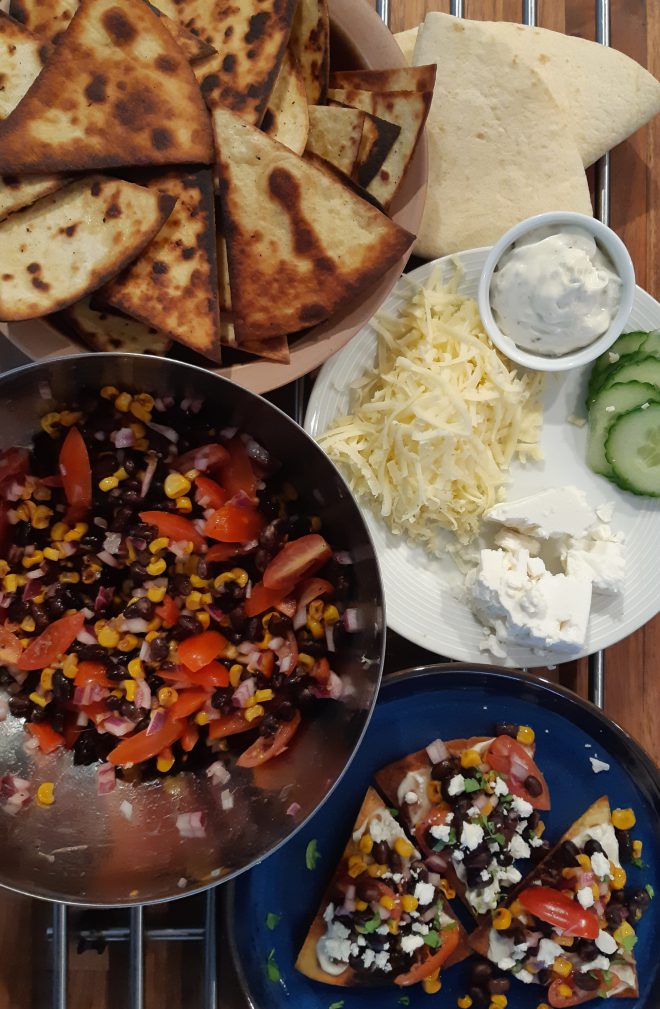“Gah, the waste!” A common infuriated cry from the parents I work with.
Whilst children are still learning to like food, understand mealtime etiquette and develop the ability to recognise the consequences of their actions, some food waste when feeding children is inevitable.
For many, the amount of waste is eye-watering but there are lots of small and achievable changes you can make which will make a big difference to your stress levels, bank balance and the planet.
Feeding ourselves and our families really doesn’t have to cost the earth, but it also doesn’t have to cause us overwhelm. We don’t have to do it all at once. We can take it one step at a time.
Here are just a few ways in which you can make a start with your family. These are my 3 Ps for reducing food waste when feeding children.
1. Planning
I truly believe that meal planning can help EVERYONE but when feeding children, it’s a fundamental way to keep the food waste at bay.
Meal planning allows you to think about what you’ve got that needs using up and make a plan for eating it. It also means that you only buy what you need and can consider how much you need to prepare.
Thinking about what you’re going to eat in advance means you’ll be eating a wider range of meals and snacks, including a good variety of foods into your week and supporting your child to be comfortable exploring foods so that they can learn to like them. A great way to prevent and manage fussy eating issues, which results in less mealtime waste.
Whilst doing your planning, you can work out how to incorporate your child’s preferred (or safe foods) into your meals, meaning there’s always food on the table that you know they’ll eat and so less likely to result in waste.
You’ll know what you’re cooking each day and you can remain calm in the kitchen as well as at the table – being stressed, anxious and snappy at mealtimes is only going to put your child off eating and lead to more waste.
But don’t think that meal planning has to fall solely on your shoulders. Make it a family affair. Children like to feel like they have some decision-making powers, even if these are quite restricted so make them feel more involved in what the family is eating at mealtimes by asking them for suggestions for the weekly meal plan. The likelihood is, they’ll eat better as a result.
2. Preparing
Having done some planning, you can be more prepared at mealtimes.
When doing your meal planning, look at ways to give yourself a break off the back of the work you’re going to be doing. See if you can spot where you can be more efficient with your food, time and energy. For example, identifying how you can use up leftovers, make use of an ingredient that will need to be used in several meals or which of your child’s preferred foods you can stock up on so you can grab what you need when you need it. Having a box of cooked pasta in the fridge, a pack of wraps in the freezer (separated with greaseproof paper so you can take out just what you need) or some popcorn in a box on the worktop can be a lifesaver.
Batch preparing and freezing fruit or savoury muffins, having a stash of energy bars in the fridge which will last a few weeks or having sliced up fruit loaf in the freezer, for example, for snacks means you can offer variety without feeling like you have to present the same food for days on end to make sure it doesn’t go to waste.
You can prep ingredients such as a whole carrot into sticks and store in a box in the fridge to be eaten over a couple of days. If it doesn’t get eaten, consider how you can incorporate it into the next meal. You’ll save yourself some time, have the foods easily available but not be worried about the waste.
3. Presenting
The way that you present food at mealtimes can really impact the amount wasted.
If you’re plating up meals for your child, try serving them very small portions and allow them to ask for more if they want or need it.
By serving up large portions of food at every snack and meal, we’re bound to be offering too much the majority of the time, which will inevitably go to waste. We can also overwhelm children and put them off eating altogether by serving large portions, especially if there is something new or disliked on the plate.
Another great way to serve meals is to put the food in the middle of the table and allow everyone to help themselves.
They might get carried away at first but as they get used to this way of serving, they’ll soon learn how to consider how much they can eat, how to take the right amount, that they can go back for more and that the food is for all to share.
By serving smaller portions or meals family-style (putting the food on the table for self-service) means that anything that doesn’t go on your plates can be stored in the fridge or freezer for another meal or snack.
You can use the change in the way that you present food as an opportunity to talk to them about how food waste makes you feel and the impact wasting food has so that they learn to understand why it’s important to you. And don’t forget to let them know and see what you do with food that is leftover – it goes towards another meal.
You might find from this discussion that they have their own ideas on how you can reduce food waste and that you can agree on what you might all tackle next, as a team effort.
